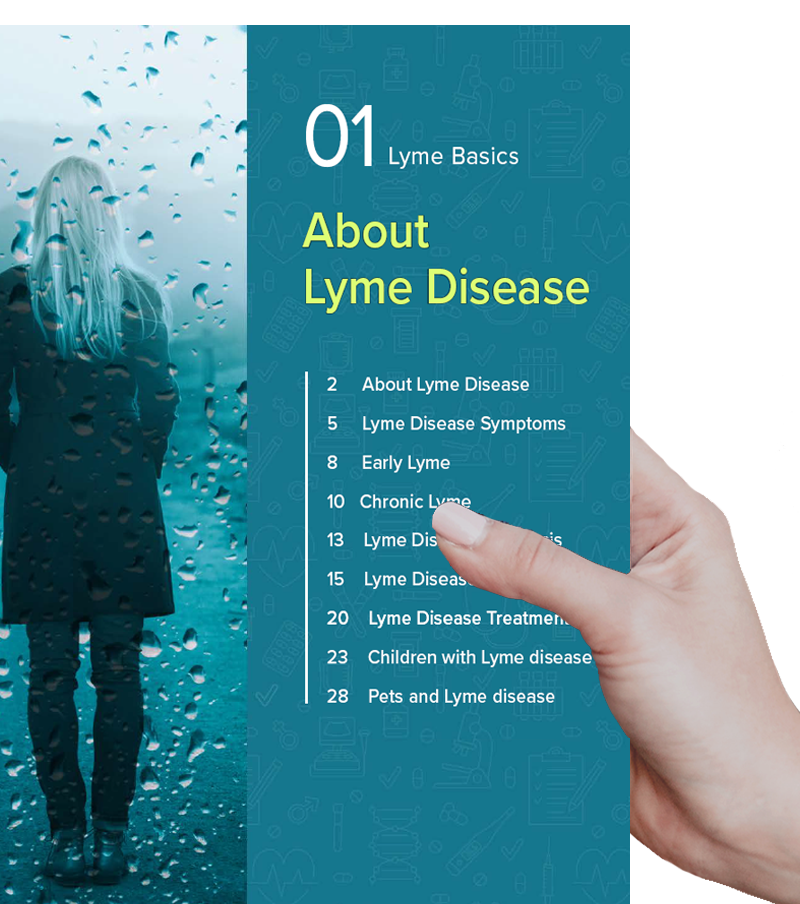Babesiosis symptoms
Babesiosis is a tick-borne illness caused by Babesia parasites that invade and destroy red blood cells.

Could it be babesiosis?
Babesiosis is a tick-borne illness caused by Babesia parasites that infect your red blood cells. The severity of infection can vary widely: some people have no babesiosis symptoms at all, while others may become seriously ill — especially if they are older, have a weak immune system, or if they’ve had their spleen removed.
Much like Lyme disease, babesiosis often begins with subtle symptoms that can easily be overlooked. Early signs — like fatigue, chills, headaches, or muscle aches — may be mistaken for a common virus, stress, or even dismissed altogether. Because these symptoms are vague and may not follow a predictable pattern, babesiosis is often missed, especially in the early stages.
Some patients may feel better for a time, only to have babesiosis symptoms return or worsen weeks later. Unlike Lyme disease, which sometimes presents with a distinctive rash, babesiosis offers no clear visible indicators. This can make it more difficult to recognize and underscores the importance of prompt testing and correct diagnosis.
Common Babesiosis Symptoms
Babesiosis symptoms typically develop 1 to 8 weeks after infection. Individuals may experience:
-
Fever
Most Common -
Chills
Most Common -
Night sweats (often drenching)
Most Common -
Shortness of breath (“air hunger”)
-
Fatigue or Weakness
Most Common -
Headaches
-
Muscle or joint aches
-
Loss of appetite or weight loss
-
Nausea
-
Gastrointestinal issues
-
Depression


Serious Signs of Infection
Babesia parasites destroy red blood cells, which can cause serious complications — especially in high-risk individuals. Those most at risk for severe illness include adults over 50, people who are missing a spleen, and anyone with a weakened immune system.
Patients may develop:
-
Anemia (low red blood cell count)
-
Dark-colored urine
-
Jaundice (yellowing of the skin or eyes)
-
Low blood pressure
-
Organ failure (in severe cases)
Many patients with Lyme disease also have another tick-borne infection, such as Babesia. This is referred to as having “co-infections.” Both Borrelia burgdorferi (Lyme disease) and Babesia are transmitted by the same tick species, which means people can get both infections from a single bite.
Recent studies show that Babesia is the most common co-infection in Lyme disease patients. In a Lymedisease.org survey of 3,000 Lyme patients, 50% had at least one co-infection — with babesiosis affecting a third of them.

Babesiosis requires different treatment than Lyme disease. Missing the diagnosis can result in incomplete recovery, even if Lyme disease is correctly treated. That’s why accurate testing is crucial — especially if symptoms linger or worsen despite Lyme treatment.
Note: The information presented on this page has been reviewed and approved by a member of our Medical Leadership Board.
Take the first step towards understanding tick-borne disease with an exclusive guide to something here, all backed by world-leading science.

More Lyme Basics
Learn More
Ticks are tiny parasites that feed on the blood of their hosts (humans and animals) in order to survive and advance to the next life cycle stage. Most ticks have four stages: egg, larva, nymph and adult. The larva and nymph need a blood meal to move to the next stage. Ticks are extremely small, with the nymph the size of a pinhead.
Learn More
Learn More



